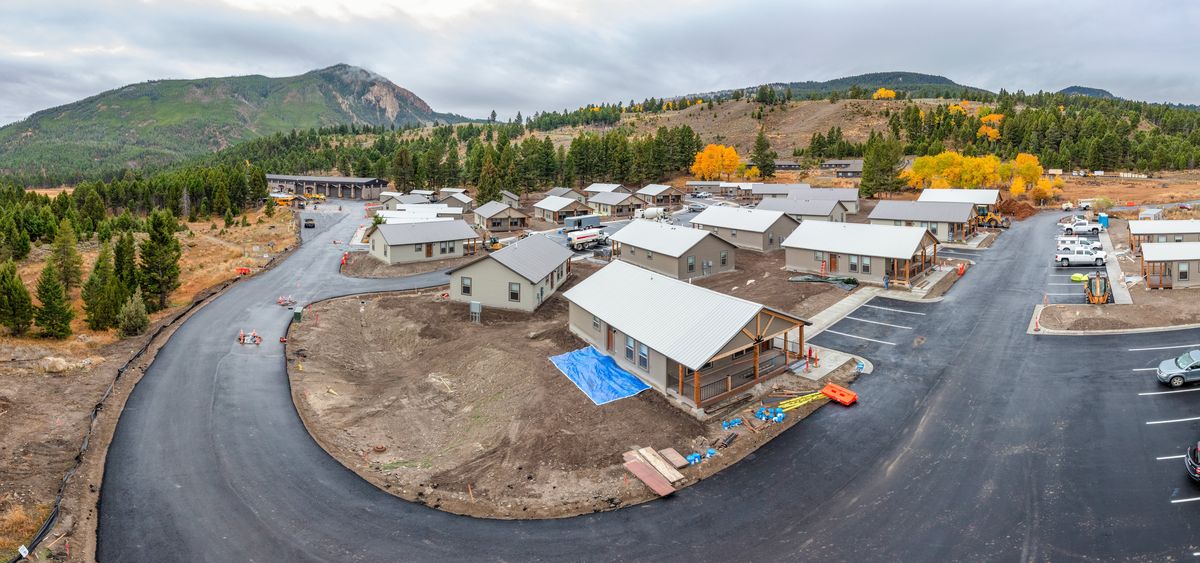$40M donation benefits Yellowstone housing projects

BILLINGS – A $40 million anonymous donation will help fund more than 70 new modular housing units spread throughout Yellowstone National Park.
The donation was announced Thursday by the National Park Foundation and National Park Service. Work on the new units in Yellowstone is set to begin later this year.
“I am incredibly grateful to the donors to the National Park Foundation whose tremendous generosity will help NPS address this critical need,” said Chuck Sams, director of the National Park Service, in a statement.
Housing upgrades began in the park in 2020 with the removal of old trailer homes, some of which dated back to the 1960s. Five locations in the park – including Mammoth, Lake, Old Faithful and West Yellowstone – were identified for a $39 million investment that installed 70 modular homes.
The second phase of housing is slated to remove another 31 outdated trailer houses, replacing them with one and two-bedroom modular homes, at a cost of $20 million. The Park Service will assess where to place the new homes based on an “analysis of where housing shortfalls exist,” according to Morgan Warthin, park chief of public affairs.
In addition, the Park Service has more than 500 other types of nontrailer housing in the park – some of it historic – that has not been updated for decades. So far, 191 of those facilities have been improved with the rest targeted for completion by 2026.
“The majority of employees who work in Yellowstone also live in Yellowstone,” Cam Sholly, park superintendent, said during a Feb. 22 Yellowstone Summit talk. “And Yellowstone is bigger than Delaware and Rhode Island put together. It’s a massive park with pockets of employees living in different locations, and they really don’t have choices to live necessarily out of the park. Some do if they’re close to the boundary, but the majority of people we hire are coming in and we’re giving them housing so that they can do their jobs, whether that’s a biologist, law enforcement or education ranger.
“We want the best of the best working in Yellowstone. The best of the best aren’t going to come to live in 1960s trailers. That’s the bottom line.”
The sizable donation comes as housing prices in gateway communities like West Yellowstone, Gardiner and Jackson, Wyoming, have soared while at the same time becoming less available as more units are rented out as short-term vacation properties.
“Even in areas where park employees used to be able to come and rent an apartment, or whatever the case is, a lot of those rentals are not available now,” Sholly said. “And then the housing market itself has just gone through the roof in these areas.”
Of the park employees working at the Mammoth Hot Springs’ headquarters, Sholly said about 100 have homes in nearby Gardiner, many of whom purchased their houses in the 1990s or early 2000s when it was more affordable.
“And now there’s a big group of those people retiring,” he said, including wastewater treatment operators, snowplow drivers and law enforcement officials. “As they retire, now their houses are worth a million dollars or a million dollars five, whatever the case is. Their replacements can’t get into the market.”
The problem isn’t restricted to the Park Service, Sholly noted. Small businesses in gateway communities are also struggling to find affordable housing for employees. Lack of affordable housing is also a nationwide trend impacting lower-income individuals.
“The housing challenges facing each park are unique, and so are the solutions,” Sams said. “NPS is committed to innovative solutions that contribute to meeting the demand for employee housing across the National Park System.”
NPS employs 20,000 people who support operations at 429 parks located in all 50 states, the District of Columbia, and U.S. Territories. In all, there are more than 5,600 housing facilities in over 200 parks, ranging from 100-year-old cabins to modern dormitories and duplexes in urban and rural communities, as well as remote areas.
More than 15,600 people rely on these homes, including 2,800 permanent and 5,000 seasonal employees, as well as volunteers, and employees of concessionaires and park partner organizations.
“These skilled, dedicated professionals at the National Park Service who protect our parks and make visitors’ experiences great deserve housing they can be proud to call home,” said Will Shafroth, president and CEO of the National Park Foundation.
A National Park Foundation assessment of NPS housing needs at three national parks – Acadia, Yosemite and Grand Teton – found that in total, those parks require more than $115 million in funding to add over 200 new employee housing units.
Sholly said under the umbrella of priorities in Yellowstone, the workforce is at the core.
“You’re only as good as your team,” he said. “And the team in Yellowstone, to me, is really second to none in the country.”
In addition to protecting the resources of the park and making the right decisions for the future, the team has to deal with the politics of surrounding counties and communities in three states – Montana, Wyoming and Idaho.
“You can’t attract a good workforce … if they don’t have a good place to live.”